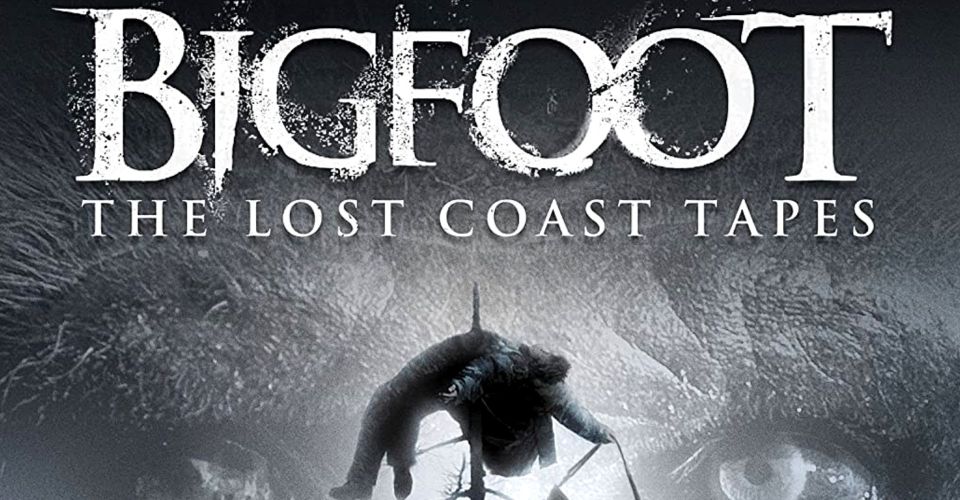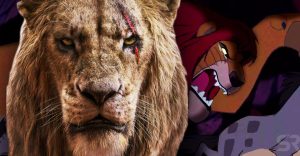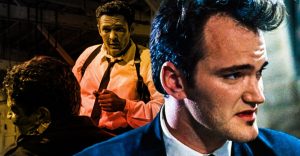10 Things You Need to Know About Bigfoot: The Lost Coast Tapes

As we enjoy the last vestiges of camping season before winter hits, there is no better time to enjoy some great flicks about our favorite woodland creature, Bigfoot. With a film portfolio more impressive than any actor to date, there is no shortage of movies featuring the big guy.
But with so many movies to choose from, it can be hard to pick just one for movie night. 2012’s Bigfoot: The Lost Coast Tapes puts a unique spin on the familiar concept by mixing in the classic horror trope, found footage. Equal parts Boggy Creek and The Blair Witch Project, The Lost Coast Tapes takes the audience deep into the forests of the Pacific Northwest to discover once and for all, is Bigfoot a hoax?
10 Origin Of A Hoax

The central plot of the movie tells the story of a television film crew going to investigate the claims of a Bigfoot hunter, Carl Drybeck (played by Frank Ashmore). Drybeck claims to have the actual body of a juvenile Bigfoot. As hoax debunkers, this opportunity is too good to pass up. The crew venture the dangerous back roads of the Lost Coast to see this body for themselves.
If this story sounds familiar, that’s because, in 2008, two men in Georgia claimed to have a Bigfoot body. The men spun a harrowing tale of dragging the body out of the woods and planned a grand unveiling. A week after their big discovery, it was revealed to be nothing more than a gorilla suit in a freezer.
9 Growing Up In Bigfoot Country

Co-writer Brian Kelsey actually grew up on the Lost Coast. Spending his formative years in Bigfoot country made the infamous cryptid a constant in the writer’s life. According to a Dread Central interview with the film’s director, Corey Grant, Kelsey “remembered seeing a Bigfoot print outside his home when he was growing up.”
Part of the inspiration for The Lost Coast Tapes actually came from Kelsey’s personal experiences. In the same interview, Grant told of how Kelsey would hear “the craziest noises outside” while he was writing in his cabin. Could these be the same sounds that plagued the Drybeck cabin?
8 There ARE Bigfoot Sightings On The Coast

Bigfoot: The Lost Coast Tapes makes no bones about adding its own creative information to Bigfoot lore, adding in imaginary legends and introducing a spiritual background to Bigfoot. However, there are a few aspects of the film that are true to life.
One of the biggest is the fact that the Pacific Northwest region of the United States, where the film takes place, has the highest rate of Bigfoot sightings across the country. According to the Bigfoot Field Researchers Organization, there are over 1,300 reports from California, Oregon, and Washington alone.
7 The Patterson-Gimlin Footage Is The Holy Grail Of Bigfoot Believers

Sean Reynolds (played by Drew Rausch) mentions the Patterson-Gimlin Bigfoot footage several times throughout the film. It should come as no surprise that a self-proclaimed hoax debunker would be fascinated with the famous footage. The footage, filmed in 1967 by Roger Patterson and Bob Gimlin, appears to show a Bigfoot walking across open terrain in Willow Creek, California.
As stated in the film, the footage has been reviewed by many scientists but has yet to be officially debunked. Is this footage a piece of a larger hoax as the television crew thinks or could it be the real deal?
6 Speaking Of Willow Creek …

The legendary locale of the Patterson-Gimlin footage has it’s own special spot in Bigfoot: The Lost Coast Tapes. During the crew’s initial exploration of the forest, they come across monstrous footprints along a creek bed. While filming, Reynolds makes the observation about the area’s uncanny resemblance to the location where Patterson and Gimlin filmed their iconic footage.
This resemblance is less of a surprise when one looks at the movie’s filming locations. One of the places that The Lost Coast Tapes was filmed was none other than Willow Creek, California.
5 Filming In “Bigfoot Central”

The movie was filmed on location on the Lost Coast itself. While the region is primarily unpopulated, the few local residents refer to the area of Humboldt County as “Bigfoot Central.” Filming in such a remote location provided a unique set of challenges. In his interview with Dread Central, director Corey Grant talked about the crew’s experiences filming on the Lost Coast, saying, “When we initially got up there, we realized we couldn’t get our trucks the entire way up, but we found a logging road that we had to take as an alternate route, and we pulled it together.”
While filming in the forest made filming more difficult, the beautiful location and dense wilderness added to the mystery and foreboding of the movie.
4 Finding The Way To Found Footage

Despite not being a fan of the medium, director Corey Grant thought that found footage would be the perfect way to tell the story of The Lost Coast Tapes. Inspired by Cloverfield, Grant decided that by using found footage, the film could better portray the atmosphere and highlight what the crew was experiencing.
In an interview with Dread Central, Grant is quoted saying, “I think the found footage element wasn’t so much for scares, but to make the audience feel like they’re along for this journey.” This film marks the first time that Grant has used the found footage style.
3 How Lost Is The Lost Coast?

The titular Lost Coast is a real region in Northern California. Located in Humboldt County, it is composed of steep cliffs and dense forest. The difficult terrain has prevented the development of the land, making it one of the most unpopulated regions in California.
Accessibility to the region is highly limited. With no major highways, the few communities are accessible only through rough mountain roads. The complete isolation of the area led to the much of the Lost Coast being acquisitioned by natural preservation efforts. The Sinkyone Wilderness State Park and King Range National Conservation Area cover the majority of the Lost Coast’s coastline.
2 The Bold And The Beautiful … And The Bigfoot

Does the aspiring television debunker Sean Reynolds look familiar? You may recognize actor Drew Rausch from his time on The Bold and The Beautiful, where he played Dr. Chester.
Primarily a character actor, appearing in bit parts in everything from NCIS to Grey’s Anatomy, Rausch’s six-episode stint on the daytime drama represents his longest-running recurring role. His role in Bigfoot: The Lost Coast Tapes is a dramatic departure from his usual television fare into the world of horror.
1 Anatomy Of A Bigfoot Hunter

The best part of any Bigfoot movie is the crazy old man who spends his days out in the woods searching for the big guy. The Lost Coast Tapes does not disappoint in this arena. Carl Drybeck hits all of the classic stereotypes: he’s paranoid, cryptic, and perpetually angry.
Played by Frank Ashmore, Drybeck is the central point of the film, keeping the plot tethered to what little grasp of reality it has. Covered in camouflage and plaid, Drybeck melds the tropes of the wise old man and paranoid drunkard into the perfect anchor of a Bigfoot flick.
About The Author

















